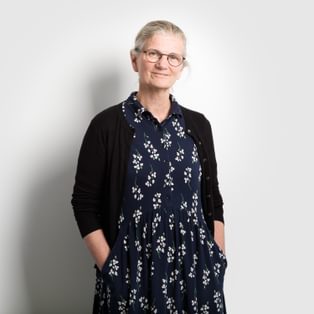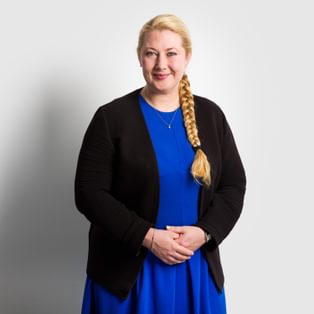Simon Goldring and Kitty Brockbank take a look at a bizarre case where the deceased turned out to be alive and kicking and her “husband”, who had agreed to give away part of her London home, did not actually exist!
Have you ever found yourself feeling a cold shiver, as if a ghost had walked past? One can only imagine that is how Deputy Master Linwood felt in Ashimola & Anor v Lasisi & Samuels [2025] EWHC 502 (Ch) when the deceased turned up on video link in the courtroom!
The case
Describing the facts of this case as peculiar would not quite do it justice. Allegations of fraud and forgery are relatively commonplace in probate disputes. Less common, however, is for the deceased to appear before the Court as a litigant in person claiming they are, in fact, alive!
June Ashimola sought to revoke the grant of Letters of Administration extracted over her estate by Ruth Samuels, who was acting as an attorney for Ms Ashimola’s supposed husband, Bakare Olatoye Lasisi.
The Court was told that Ms Ashimola died in Nigeria on 6 February 2019 and that she had married Mr Lasisi on 11 November 1993. Ms Samuels (purportedly on behalf of Mr Lasisi) successfully obtained a grant, which was issued on 18 October 2022, and which recorded Ms Ashimola’s estate to include her London home.
Ms Ashimola testified before the Court (via video link) that she was very much alive. She provided a copy of her passport to the Court, which was issued 22 days after her supposed death, on 28 February 2019. She also claimed that she had never heard of a Mr Lasisi and certainly had not married him in 1993.
As Ms Ashimola claimed never to have heard of Mr Lasisi, attentions turned to him. When asked how Ms Samuels met Mr Lasisi, she explained that she had only met Mr Lasisi after Ms Ashimola’s death. However, she also said she knew Ms Ashimola very well before her marriage to Mr Lasisi and had visited her house for BBQs in the summer. Deputy Master Linwood did not consider Ms Samuels’ evidence credible given Ms Ashimola had only arrived in the UK after her marriage to Mr Lasisi… When pressed further, Ms Samuels could not explain how she knew Mr Lasisi at all.
Mr Lasisi did not participate in the claim beyond serving his acknowledgment of service and witness statement (which was e-filed by another individual). Deputy Master Linwood was concerned by the lack of personal information in Mr Lasisi’s witness statement – no address or occupation was given and there was no reference to Ms Ashimola being his wife, nor how they met. It also did not go into any detail about her death; paragraph 11 of his statement simply said: “I can confirm that June Ashimola is dead”. Not terribly heartfelt. Mr Lasisi submitted no evidence of identity. This, teamed with the facts that: (i) no original marriage certificate or death certificate had been placed before the Court; and (ii) Ms Ashimola was alive and said she had not married Mr Lasisi, led Deputy Master Linwood to conclude that Mr Lasisi was, in fact, not real!
It transpires that the above was all part of an elaborately embroiled plot by a gentleman named Tony Ashikodi, who had been attempting to take Ms Ashimola’s house. Apparently, he had asked if he could take care of her house when she went back to Nigeria. Ms Ashimola refused, so he attempted to transfer the property to himself (using Ms Samuels) by pretending she was dead. As an aside and to add yet another layer to this case, Mr Ashikodi had already served a three-year prison sentence for conspiring to and/or obtaining a property by deception.
The claim heard by Deputy Master Linwood followed proceedings in the Land Registry in which Mr Ashikodi claimed to have a beneficial interest in Ms Ashimola’s home. He claimed that: (1) he contributed £13,693.33 to the deposit; and (2) because of this, Mr Lasisi (following Ms Ashimola’s death) had agreed to give Mr Ashikodi 50% of the home. While Mr Ashikodi could provide no evidence for this payment to Ms Ashimola, he explained he offered to buy Ms Ashimola this house for his children to live in with her. Deputy Master Linwood did not agree and described Mr Ashikodi as having a “cavalier disregard for the truth”. The Land Registry rejected Mr Ashikodi’s claim over the property finding that the evidence he submitted was “neither coherent nor sufficient to support his claim”.
Deputy Master Linwood similarly did not accept the evidence of either Ms Samuel or Mr Ashikodi and held that he had jurisdiction under s.25(1)(b) of the Senior Courts Act.
The judgment concluded: “Ms Ashimola is alive. The Grant is revoked.”
Key takeaways
It is hard to draw practical learnings from this case which don’t sound ridiculous, but:
- Make sure the individual you are applying for a grant over is actually dead!
- Make sure your client actually exists!
- Do not forge documents or signatures!













































